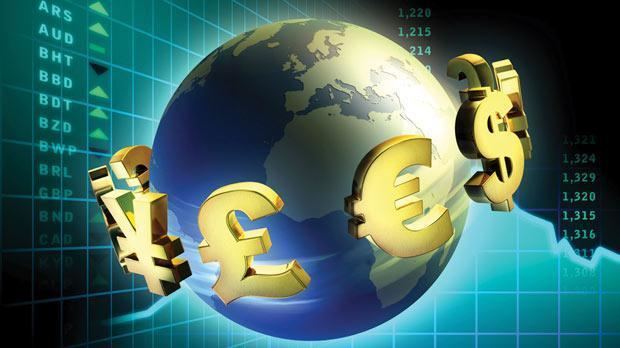 | ||
The world economy through the eyes of raghuram g rajan
The world economy or global economy is the economy of the world, considered as the international exchange of goods and services that is expressed in monetary units of account (money). In some contexts, the two terms are distinguished: the "international" or "global economy" being measured separately and distinguished from national economies while the "world economy" is simply an aggregate of the separate countries' measurements. Beyond the minimum standard concerning value in production, use, and exchange the definitions, representations, models, and valuations of the world economy vary widely. It is inseparable from the geography and ecology of Earth.
Contents
- The world economy through the eyes of raghuram g rajan
- World economy by Country Groups
- Current world economic league table of largest economies in the world by GDP and share of global economic growth
- Twenty largest economies in the world by nominal GDP
- Twenty Largest Economies in the World by PPP GDP IMF and CIA World Factbook
- Economy
- Employment
- Industries
- Energy
- Cross border
- Gift economy
- Communications
- Transport
- Military
- Economic studies
- References
It is common to limit questions of the world economy exclusively to human economic activity, and the world economy is typically judged in monetary terms, even in cases in which there is no efficient market to help valuate certain goods or services, or in cases in which a lack of independent research or government cooperation makes establishing figures difficult. Typical examples are illegal drugs and other black market goods, which by any standard are a part of the world economy, but for which there is by definition no legal market of any kind.
However, even in cases in which there is a clear and efficient market to establish a monetary value, economists do not typically use the current or official exchange rate to translate the monetary units of this market into a single unit for the world economy, since exchange rates typically do not closely reflect worldwide value, for example in cases where the volume or price of transactions is closely regulated by the government.
Rather, market valuations in a local currency are typically translated to a single monetary unit using the idea of purchasing power. This is the method used below, which is used for estimating worldwide economic activity in terms of real US dollars or euros. However, the world economy can be evaluated and expressed in many more ways. It is unclear, for example, how many of the world's 7.13 billion people have most of their economic activity reflected in these valuations.
As of 2015, the following 13 countries or regions have reached an economy of at least US$2 trillion by GDP in nominal or PPP terms: Brazil, China, France, Germany, India, Indonesia, Italy, Japan, Mexico, Russia, United Kingdom, United States, and European Union.
World economy by Country Groups
The following two tables list the Country Groups with individual countries designated by the IMF. Members of the G-20 major economies are in bold.
Current world economic league table of largest economies in the world by GDP and share of global economic growth
The following two tables list the twenty largest economies by GDP (Nominal), twenty largest economies by GDP (PPP), and the twenty economies with the largest shares of global economic growth from 2014 to 2015. Members of the G-20 major economies are in bold.
Twenty largest economies in the world by nominal GDP
The following is a list of the twenty largest economies by nominal GDP at a specific year according to International Monetary Fund.
Twenty Largest Economies in the World by PPP GDP (IMF and CIA World Factbook)
The following is a list of twenty largest economies by GDP (PPP) at a specific year according to the CIA World Factbook and the International Monetary Fund.
Economy
Employment
Industries
Energy
Cross-border
Gift economy
Communications
Telephones – main lines in use: 843,923,500 (2007)
4,263,367,600 (2008)
Transport
Transportation infrastructure worldwide includes:
Military
Economic studies
To promote exports, many government agencies publish on the web economic studies by sector and country. Among these agencies include the USCS (US DoC) and FAS (USDA) in the United States, EDC and AAFC in Canada, Ubifrance in France, UKTI in the UK, HKTDC and JETRO in Asia, Austrade and NZTE in Oceania. Through Partnership Agreements, The Federation of International Trade Associations publishes studies from several of these agencies (USCS, FAS, AAFC, UKTI, HKTDC), as well as other non-governmental organizations on its website GlobalTrade.net.
